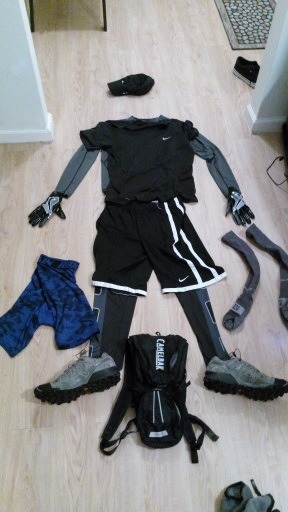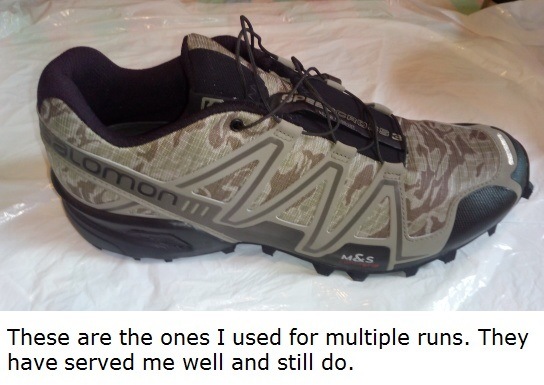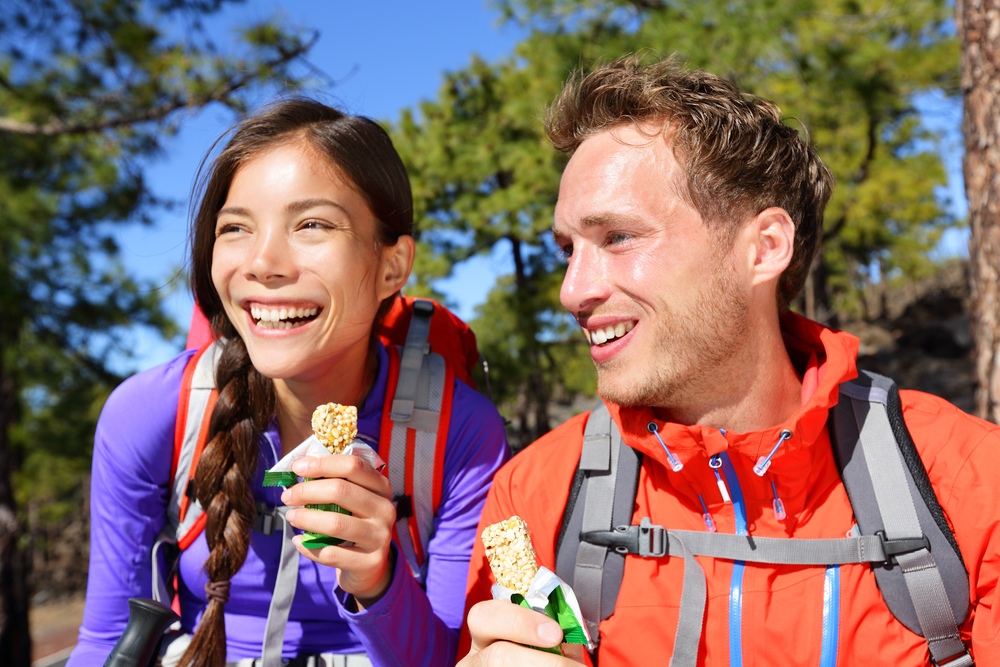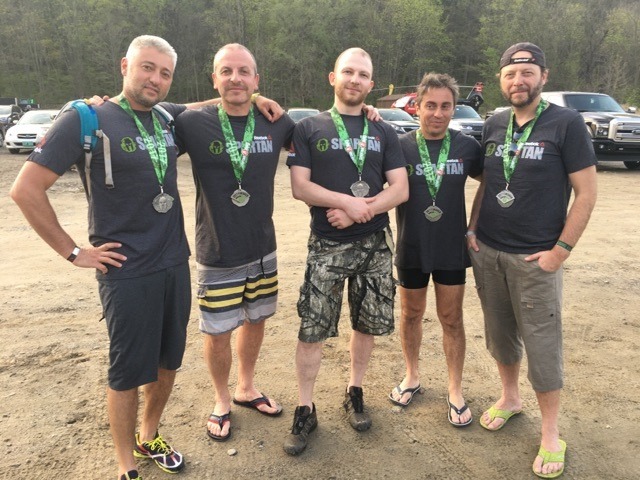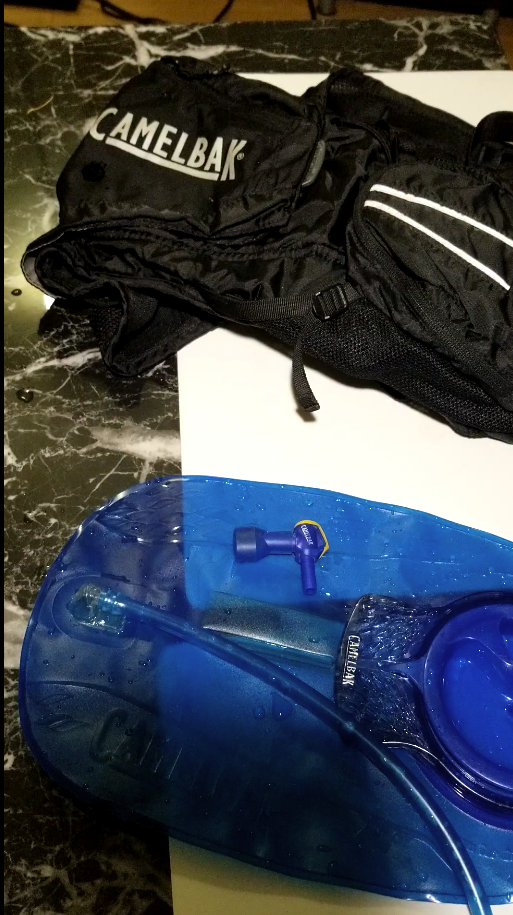I happen to believe that one of the best ways to prepare for a mud run is to know what to wear for it and these 10 essentials are without a doubt, recommended!
When it comes to mud runs, you’re going to see a lot of different ways people dress for it. Some dress normally, others reveal a lot of skin, there’s teams that have their own uniforms, and there’s some people that really want to show off (like men having tutu’s on which you will see).
But what is the best clothing to wear for a mud run?
While I like the humor and creativity of people who wear costumes on mud runs, in my experience, the best clothing is going to be the one that keeps you safe and after finishing 7 and a half races (1 was cancelled midway), I have found the following 10 clothes and accessories are going to do that and help you have maximum comfort when going through these courses:
- They will keep your body protected from the dirt, scratches, possible infections and mud.
- They are going to ensure your muscles stay warm, elastic and keep you moving further.
- They are going to insulate heat and make sure you don’t get too cold or too hot.
- They are going to make sure you minimize the chances of slips, twists and injuries.
- And if you’re doing a mud run with electric shocks, these are actually going to reduce the damage too!
Here’s a preview of the clothing to wear (person not included):
Here are the 10 things you should wear on a mud run:
These 10 things helped me out a lot on multiple events:
1) Proper sneakers (most important).
If there is one thing at the top of the list of mud run wear, it’s proper footwear, sneakers in particular.
Your feet are going to take the biggest punishment in the race and being on uncertain terrain where it can get slippery, muddy, dirty and elevations change over and over, you’re going to need something dependable.
I’ve worn Nike’s (basketball shoes), sketchers and other types of sneakers on these events. I slipped a lot. I stumbled a lot and yet I was very lucky that these slips didn’t lead to broken legs or twisted ankles and believe me, I’ve had numerous close calls.
When I finally decided I couldn’t keep playing with luck, I decided to research and buy a PROPER pair of mud running sneakers, which ended up being the Salomon SpeedCross.
So far, here is how these sneakers have performed:
I’ve completed 3 MAJOR mud runs with these shoes (2 tough mudders and a Spartan Race that was 14 miles long). In addition to that, I’ve also worn the SAME pair for at least 5 different hikes I’ve done.
Now because I’ve done these events a few years ago, the Salomon has evolved and a 4th generation model has come out, and it gets just as good of reviews as the 3rd generation did:
- If you want to get the Salomon Speedcross 4 for men, here is the link.
- For women, here is the link for them.
I’ve had my same pair for over 5 years now and they still perform as well as when I first got them. I just wash them when I get home, let them dry and BAM, they are ready for the next trip/race. That’s just how good the Salomon products are.
I’m still shocked at how extremely resilient they are, but that’s just what makes them so good beyond that, the comfort and convenience of running mud runs in these is night and day compared to the previous pairs I’ve worn.
You just can’t compare it. These sneakers are without a doubt a MUST for anyone doing mud runs. Also, these sneakers come in different colors, for men and women, so you have a lot of variety to choose from while maintain the same level of quality.
If you wear the right sneakers, you’re going to slip less, have more traction and control when you run in the dirt and in wet, slippery areas and all of that is going to help prevent injury and keep your energy up. And I have to say, ever since I switched to the Salomons, I’ve never had to find another pair, this one is perfect.
2) Good socks.
Do NOT ever wear cotton socks when doing these events, ever.
You need to put on something that is made of polyester or is synthetic. Good socks ensure your calves and other muscle groups are tight and this will keep your muscles working longer.
This is the pair I’ve used for at least 3 mud runs now and they are specifically made for mud runs by the way.
The first time I wore them, they were on pretty tight, but as I was trying them out on their first mud run, I noticed after several hours how much better my legs felt with them on. I was protected from the dirt, the cold, even the water and it was almost as though there was a protective layer of clothing keeping my lower legs well sheltered.
As I used this same pair on my next runs, I became more and more comfortable with them and never leave to a mud run without these being on. They keep my legs warm, my muscles elastic and able to withstand the long punishments of these races. See what other people who wear these say.
3) Compression pants (rash guards for legs).
I prefer most skin be covered up when doing a mud run because of the risk of running into something or falling and causing a bloody injury. You’re going to be running and swimming in mud. You’re going to get dirty.
No one knows what bacteria is in there and if you cut yourself accidentally, it’ll be much safer if you wear some kind of clothing that will prevent that. Compression pants are great for this because they won’t hinder the way you move, they’ll keep your muscles warm and if you get cut somewhere, there’s a better chance your leggings will be ruined than your skin and you getting a potential infection.
My first race at MudManX, I actually cut my finger while trying to balance myself. There was NO anti-septic in the area or at the water stations and I could only use water to wash it off. I didn’t get any infection, but the more skin you have exposed, the more chances something can happen if you get hurt.
Here is a good deal for 3 compression pants. I also have to say that I have used the same compression pants for at least 3 races.
4) Rash guard (for the body):
Compression pants will protect your skin in the lower body and a rash guard will protect the upper body. Get a rash guard that has long sleeves. The more protection you have, the safer you’ll be.
Something like this will be perfect for the race and it will suite you whether you do an even in the cold or warm weather.
One thing you will note is that if and when you do get into the water (and it will be cold, trust me), these will insulate your body heat very well and help you recover faster.
5) Nylon/spandex pants, shirt and shorts:
Something that is made of nylon and spandex is easier to wear and is more water proof. Even if it gets completely soaked in mud or water, it won’t weigh you down like other clothes will. This kind of clothing is good to wear under regular clothing if you’re doing a race when it’s cold. It’ll keep you warmer.
I wear these above the rashguard stuff I have on for extra protection, especially if I’m doing a mud run during a colder season.
6) Elbow pads:
These will protect you if you fall on a hard surface and if and when you are crawling through mud where there’s probably a lot of rocks which you can hit, elbow pads will also protect you from getting injuries or getting dangerous scratches.
These ones are the closest to the ones I used and I prefer these kinds because they are soft but also great at protecting my elbows.
7) Knee pads:
I was made fun of when my team saw me put knee pads on, but after the race ended and everyone’s knees were bruised and hurt while mine were fine (I wore these awesome pads), they knew I was right. Knee pads are extremely important, especially if you have issues there. Whether you fall from a height or also hurt yourself while going through mud and rocks, these will protect you.
One note about the pair I wore (still wear) is that it’s also extremely resilient to the weather and even when it gets wet, it seems to provide even better protection. Anyone who has knee issues doing a mud run NEEDS knee pads and for that matter, just wear a pair anyway if you don’t have it, otherwise your knees will get banged up, believe me.
8) Rash guard underwear:
I always put these on for these events. No matter what happens or how much dirt I get into them, having these on feels light and I never get blisters from them. The last place you want to have issues is the groin area…
Here are ones almost identical to mine (I couldn’t find a link to the exact ones, but these are fine).
9) Gloves:
Usually nylon/synthetic gloves are good for grip for these events. I keep a pair handy with me, but have rarely had to use them. Usually the poles I have to climb or walls I need to scale don’t work well with the gloves, but having them with me anyway makes that still a possibility. I rely on training my grip with just my bare hands. But perhaps if there is a rope challenge, gloves will come in handy.
10) Put on a cap or hat if it’s very sunny outside.
I didn’t do that the last time I did the Spartan Race and I had a massive sunburn on my head. I also could have had a heat stroke if I wasn’t careful. Have something on to protect your head. If it’s very hot outside and sunny, you need to cover it up. If it’s very cold, you need to keep your head and ears warm so you don’t freeze.
I wear all those 10 things (gloves are optional but I keep them just in case) and on my last mud run which was Tough Mudder, not only did it protect me from cuts and injuries, but it also kept me warm, protected me from cramps and even the electric shocks!
Additional clothing tips:
You’ll be surprised by some of these suggestions but I’m serious about them…
The color of your clothes matters!
Wear brighter material when doing these races in hot weather. They absorb less sunlight and will keep you cooler.
I tend to put on white/grey/green/yellow or any light color when doing a mud run in the summer. Darker clothing is better to put on when it’s colder.
Don’t buy the most expensive gear!
Everything you buy to use for these races is going to get dirty and damaged. The only expensive things you need to buy are really sneakers because they’ll keep you safer, but rash guards, socks, and all those other materials you need shouldn’t be very expensive.
You can buy the most expensive things, but most of the time, they will last you up to 3 times before they are no longer usable. I have always used the cheap clothes when running these events and I was very comfortable. I even washed them several times. As long as they keep you safe and comfortable, that’s it.
You should try to “recycle” as much clothing as you can after the race. If you can wash it and make it look good again, you can use it for the next race you go through. If it’s torn up, you will have to buy another.
Beginners to mud runs should aim to buy cheaper clothing but ones that are appropriate for these. More experienced runners can buy more expensive things since they will know how to be more careful and know the obstacles course better.
There’s always going to be people who will want to look flashy during these events, but there’s always a bigger risk of cuts and injuries if you’re not wearing the proper clothing. If you have those 10 things, you will keep yourself safer when going through these events, especially the more difficult ones like the Spartan Race and Tough Mudder!
Putting it all on:
Personally this is how I put everything on:
First layer: Rashguard underwear, compression socks, rash guard, long sleeve shirt.
Second layer: Rash guard pants (leggings), shorts, polyester shirt, cap and sneakers.
Third layer (optional): Gloves, hydration pack or other accessories like a GoPro. Note: If you use a GoPro, you’re going to need gear like this.
So there it is, the gear I put on for each race I partake in and let me tell you, I’ve been able to reuse the same clothing over and over. This stuff really protects you and lasts long too.
One more thing: This isn’t a mandatory piece of clothing, but it helps!
A small hydration pack like this will REALLY help you out in these mud runs people. They hold water, and important supplies so consider investing in one if you’re going to do one of the more tougher, longer events, especially if it’s hot outside or you get dehydrated easily!
